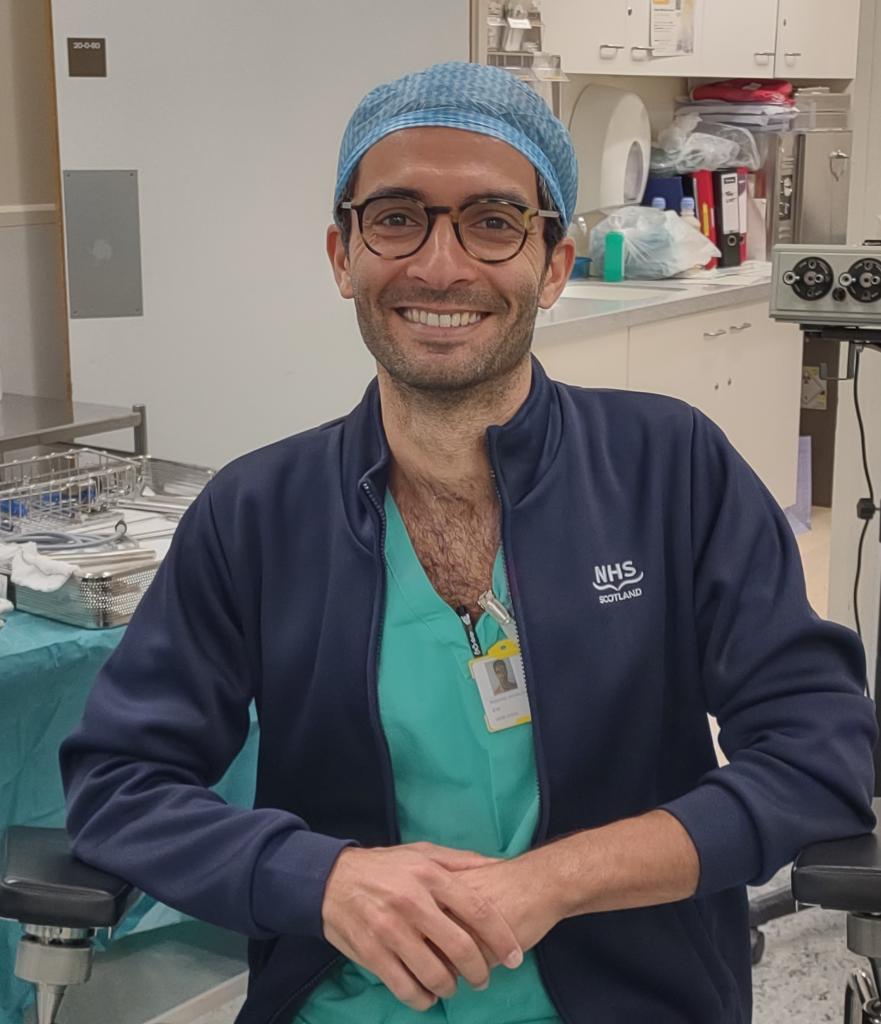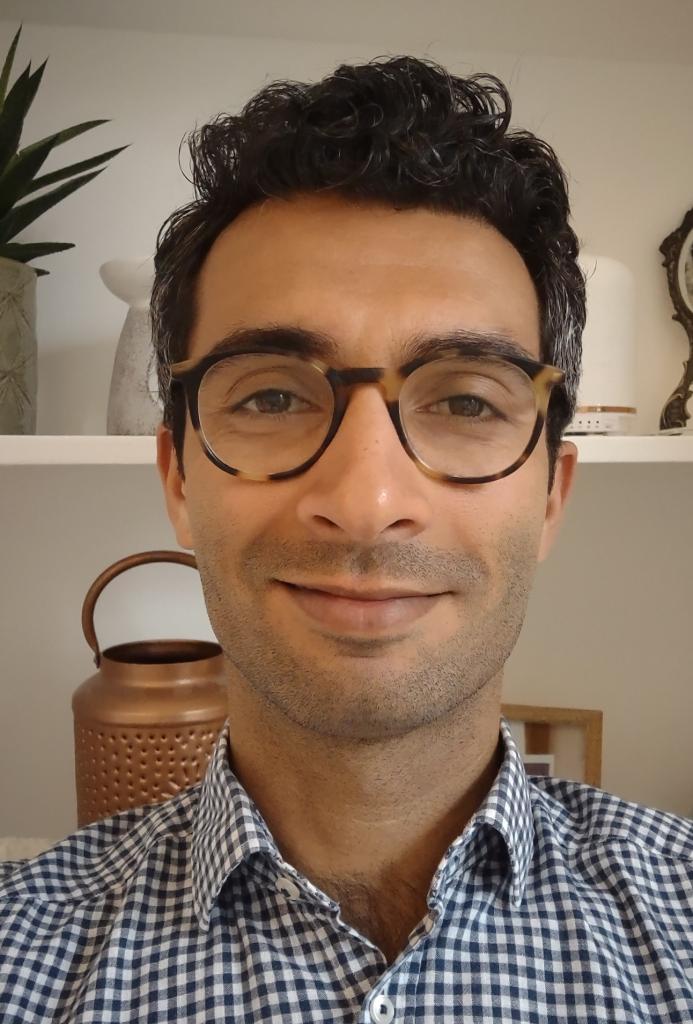Can you injure your windpipe by sneezing?
It was a chilly weekend and a driver was driving near Dundee in Scotland. His nose started itching so he closed his mouth and pinched his nose before he sneezed. However, the itching did not stop and he sneezed several more times as before, with his mouth closed and nose closed. Suddenly, his felt a sharp pain in his throat and it began to swell. It became increasingly painful to turn his head from side to side. What had happened? The driver, worried about his health, immediately went to a clinic in Dundee.
Otorhinolaryngology resident Rasads Misirovs (pictured) was on duty in admissions, along with other specialists. Rasads is not only a doctor in Edinburgh, but also a graduate of the Rīga Stradiņš University (RSU) Faculty of Medicine and a doctoral student at RSU.
A chest and neck X-ray was performed in the admissions unit. It was taken from the side to get a better view of the soft tissues of the neck. This revealed that there was air between the soft tissues where it should not be, not just in the throat and airways. To investigate further, Rasads performed an endoscopy of the patient's nose, inserting a small camera into the nasal passages. Everything seemed to be fine, the airways were open, and although the throat was very swollen, there was no immediate danger to the patient's life. Upon touch, Rasads could feel that air had accumulated between the tissues. The doctor described the sensation as like walking on snow. The patient continued to be in pain, his neck was still very swollen and it was difficult to turn his head. The doctors were aware of the risk that the swelling could eventually restrict the patient's airways.
 Photo from private archive
Photo from private archive
Continuing to look for the cause, the patient underwent CT scans of the neck and chest. This revealed the cause of the pain - a tear in the airway. The pressure from sneezing with his mouth closed and nose pinched had ruptured the trachea.
The doctor was faced with a choice - to operate, to move the patient to intensive care and intubate him, or to admit him to a ward and just observe him for a few days. The patient's pulse, respiration, blood oxygen levels, and temperature were within normal limits. The patient felt relatively well, although his throat was swollen.
Rasads consulted a colleague, a thoracic surgeon who routinely operates on patients with airway and chest injuries or disorders. The colleague, after ascertaining the patient's current state of health, recommended hospitalisation and observation. Of course, if the patient's vital signs were to deteriorate, further action would be taken.
The patient spent two days in the clinic and received pain-relieving medication, and drugs to reduce inflammation and allergic reactions. A special spray was used to relieve nasal congestion. As a result, the patient's condition gradually improved and he was discharged from the hospital and instructed not to work, lift weights or do any other physical activity for at least two weeks to avoid increasing the pressure to the neck area. The treatment and the patient’s compliance with the instructions allowed the injury to heal gradually.
Looking back on this clinical case, Rasads mentions that it is the first of its kind described in English literature. However, such cases might occur. The likelihood of obtaining such an injury is small, but it does exist.
Sneezing is one way that the body tries to protect us.
Irritants, viruses, bacteria, and allergens are expelled via the nose and paranasal sinuses, therefore, sneezing should be allowed to occur naturally. Cover your nose or mouth with the a tissue or sneeze into the crook of your elbow to avoid spreading potential viruses.
However, if you pinch your nose pinched and close your mouth when you sneeze, and experience pain and swelling of the throat to such an extent that it reduces the range of movement of the neck, it is essential to see a doctor, possibly even call an ambulance.
After this case, Rasads published a description in a small medical journal, which attracted a lot of media attention. The first e-mail he received was from Canada, followed by an interview for a radio show in the same country. More recently, there has been an interview with a German medical journal and another Canadian media outlet. The young doctor has also been featured on a BBC radio programme. According to Rasads, 101 international media outlets have taken an interest in the case and it is one of the most read articles in British Medical Journal Case Reports.
Although Rasads Misirovs is of Azerbaijani descent, but speaks Latvian fluently – as if it was his mother tongue. In 2013, the young doctor graduated from the RSU Faculty of Medicine and moved to the UK. He spent six months in Northern Ireland, working as a nursing assistant. During that time, he sent out around 50 job applications and received three invitations to interviews. One of them was in Edinburgh. The interview was successful and Rashad has been an otolaryngology (ENT) resident at the Department of Otolaryngology at NHS Lothian ever since.
During his residency, there was a break, during which Rasads focused more on research. He chose RSU as his PhD university based on his positive memories of studying at the Faculty of Medicine, the high PhD ratings of several of his fellow students, and the opportunity to study remotely.
The topic of his doctoral thesis is nasal polyps; they can be treated with drugs that reduce inflammation or surgery, but some patients develop polyps again after surgery.
 Photo from private archive
Photo from private archive
Rasads explains that currently, all patients undergo a two-week treatment course regardless of individual circumstances. The treatment has more effect on some patients more than others, while some experience none at all. The goal of the study is to determine how to evaluate and use each patient's individual health indicators so that treatment is not so generalised. Rasads adds, that although the surgery to remove polyps may seem not very complicated, there are certain risks, as it takes place close to the eyes and brain.




